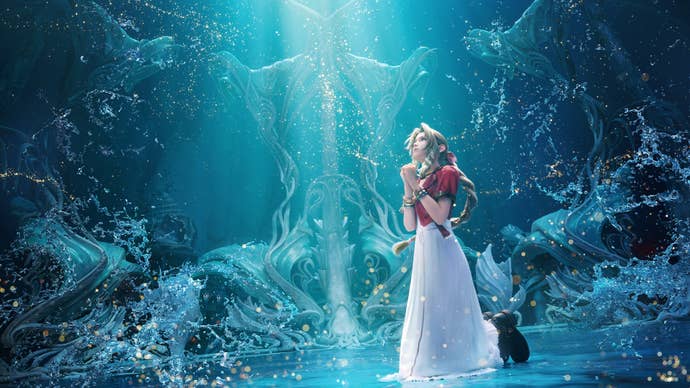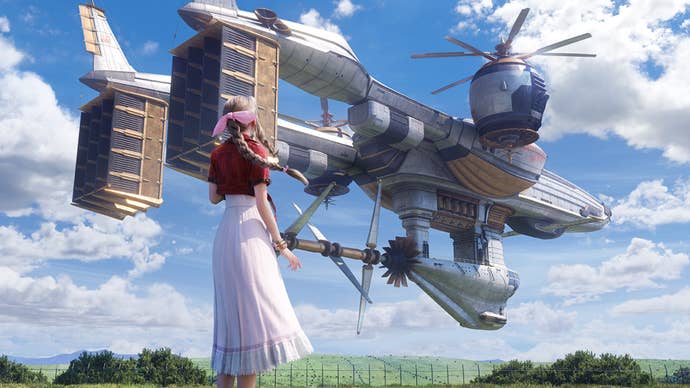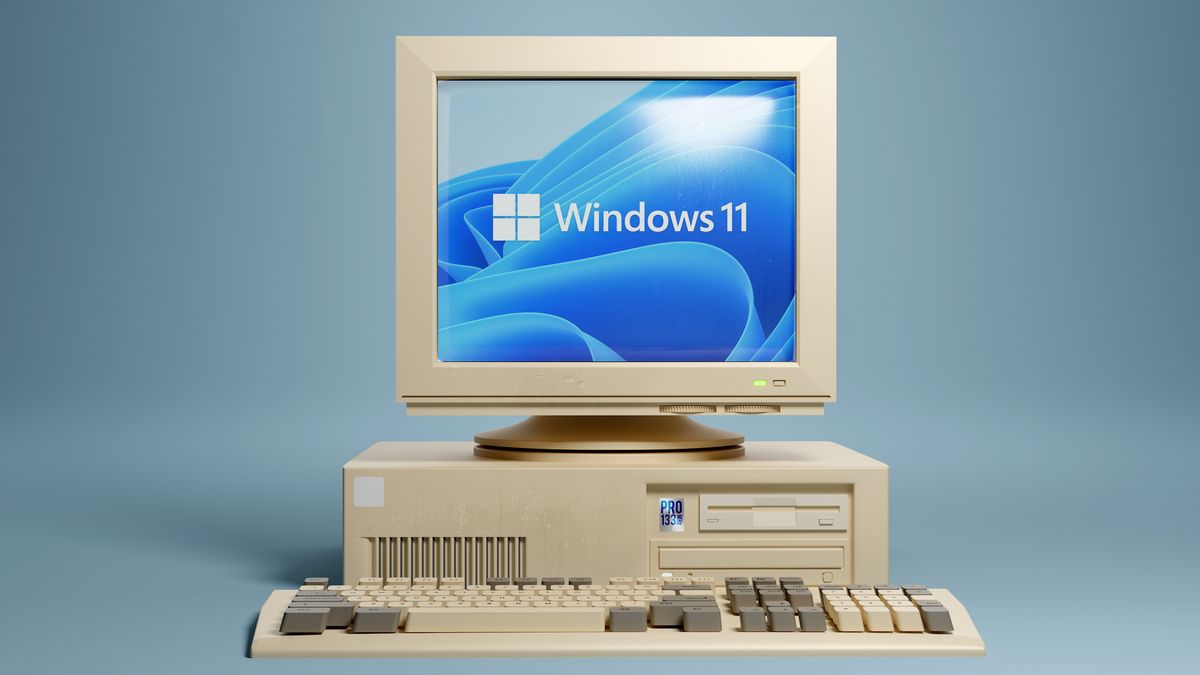FF7 Rebirth's development team has "built up a good amount of knowledge towards creating flexible graphics options" for the next title, per Hamaguchi.
Something that we didn’t talk about enough at the time is how Final Fantasy 7 Remake has some of the best-looking character models in the business. It’s also a game that has non-important NPCs who look like they fell out of the early PS3 generation, yes, but – just go back and look at Cloud in that game. Look at Barret, Aerith, Tifa. These guys are gorgeous. They’re PS5 character models - but on the PS4 generation, months before the latest generation even released.
That obviously presented an opportunity with Final Fantasy 7 Rebirth - the character models were already there, so now it was time to upgrade the rest. For the most part, Rebirth is a storming success at this - though here and there it still has environments that feel a little behind the curve, and those PS3-gen NPCs are now looking more PS4-gen, so still a generation behind. FF7 Rebirth doesn’t push the cutting edge across the board in the way some big games do, but it’s nevertheless very, very beautiful.
A game like this on console always presents a tantalizing possibility: what on earth will it be like on PC? A damn sight better is the answer, even with the PS5 Pro upgrade for Rebirth in mind. PC is now the definitive place to play Final Fantasy 7 Rebirth - but more than that, this already successful PC release is also a strong signal for the future of the Final Fantasy series.
That future involves multiplatform releases on a wide range of platforms, it seems. It also most likely involves day-one PC releases going forwards, especially after Rebirth’s initial success has demonstrated the interest that the PC market can have in the Final Fantasy series once again.
All this success comes when Rebirth is a good port, but not a great PC port - it still suffers with occasional stuttering and other technical issues that modders are working overtime to try to fix in Square’s lieu. Our siblings over at Digital Foundry have a great video detailing the shortcomings and triumphs of the port that is a lot better than some of the casual astroturfed ‘it runs great!’ commentary I’ve seen from some media, so that’s worth a watch.
None of this is to say that this port isn’t optimized - it’s clearly been carefully crafted, and well, to satisfy PC users. It’s just a little different. I still long for the heyday of Final Fantasy 15’s PC version, which was an Nvidia partner game and so arrived boasting a slew of PC-exclusive features making use of Nvidia’s latest buzzwordy, show-off tech. FF7 Rebirth isn’t that - but it runs smoothly most of the time, and makes use of Nvidia’s DLSS, which Hamaguchi describes as key.
.jpg?width=690&quality=70&format=jpg&auto=webp) Yes, all the character models look good.Image credit: Square Enix
Yes, all the character models look good.Image credit: Square Enix
“In recent years we have seen similar technology incorporated into consoles as well as PC platforms, such as the upscaling technology known as PSSR on the PS5. I think that this kind of upscaling will become standard on consoles, too,” the director notes. “People are now paying attention to DLSS FG frame generation technology on PC environments, so I think that we need to keep watching future developments in the market.”
One market development that Square Enix has been laser focused on with this port is the Steam Deck. This is one thing the developers clearly put a lot of stock in optimizing towards - and the result can be seen in the final release. While FF7 Rebirth is doubtless better experienced on a high-end rig, if you want to play one of the PS5’s best games on the go without getting into some sort of streaming situation, it’s now very much possible.
“We set Steam Deck compatibility as one of our goals for porting FF7 Rebirth to PC and ensured that the game would run stably on it using the minimum level graphics settings,” Hamaguchi says, also stating that the market share for Steam Deck devices is “significant”.
“In order to make sure we could offer a good level of visual quality even on relatively lower-spec machines, we completely re-worked the LOD reduction for background modelling. The reduction process here involves lowering the total number of polygons while still keeping the original shape of models.
“The general way this is done is to use reduction tools such as Simplygon to automatically lower the polygon count. However, we needed to reduce the number of polygons in the backdrops even further to ensure stable running on even lower spec PCs and the automated reduction processing is limited in how far it can maintain quality of form when you take it that far.
“To address this, we identified the areas where the results of the automated reduction processing were not up to our standard and went back to adjust the assets by hand in those cases. This involved checking over a huge amount of different assets and so required a significant time to do, but I feel that we achieved just the right balance between automation and work done by hand. I am very satisfied that this resulted in getting the Steam Deck Verified confirmation from Valve.”
 Safe to say, then, the next game will look even better. | Image credit: Square Enix
Safe to say, then, the next game will look even better. | Image credit: Square Enix
It’s a good result. As far as Steam Deck and other portable machines go, I’d largely point you to my buddies over on RPG Site, who have an extremely in-depth look at FF7 Rebirth on Deck and the ROG Ally, including recommended settings. But the long story cut short is this: this is a ‘Deck Verified’ game that runs well indeed, though I’d also caution that my recommendation is that deck is not your primary platform or reason to play this game. It’s a game that thrives on spectacle, and a game whose story is often best told in the sublest of facial expressions on lusciously detailed character models. You want to crank up the resolution and let high-end hardware go to town on it if you can. But the Deck is certainly useful for mopping up open world busy work on the train or in the bath or what have you.
Even on high-end hardware, the game is sometimes strange, as the previously linked Digital Foundry video makes clear. The game will oscillate between absolute stability and a frustrating choppiness - but it can’t be overstated how far this team has come from the PC port of Final Fantasy 7 Remake, which just a few years ago was a pretty wretched effort. Hamaguchi appears to be aware of this - and that fact has clearly cast a long shadow over Rebirth’s PC plans - for the better.
“With the PC port of FF7 Remake, we were not able to offer graphics options to fit with players’ differing PC hardware specs, so for Rebirth we set out to change the rendering settings for the game into a more flexible system that takes the requirements of the PC version into account from the start,” he reveals.
“The LOD in the modelling is managed using a system of more than 10 different gradations and the system automatically adjusts the grade selected based on the processing burden from the graphics and the memory limit available, in order to achieve a stable frame rate. Thanks to this system, it is still possible to play with stability and at good level of visual fidelity, even on a machine that only meets the minimum required spec level, and if you have a machine that goes all the way up to the requirements for the ultra-level then you can experience graphical quality even higher than on the PS5.”
The results speak for themselves, honestly. Especially at 4K on high-end graphics hardware, every now and then you’ll round a corner in an open world and have a vista unfurl in front of you and find it as breathtaking as the most graphically-minded games around. Or you’ll see a subtle muscle twitch in Tifa’s face as she tries to process Cloud being weird and wrong, and think, bloody hell, this is some of the best digital acting I’ve ever seen, and it being silky smooth, at 4K, with better lighting all just makes it better. It’s the best version of this game, which itself is one of the generation’s best.
 To the skies. | Image credit: Square Enix
To the skies. | Image credit: Square Enix
More than anything, this strong PC release feels like a template for the future. While they aren’t saying anything outright at this stage, all of the noises from Square Enix seem to indicate the age of their major games launching as one-platform exclusives appears to be ending. More people playing these excellent games can only be a good thing.
“I feel that we need to be even more aware than before of not just focusing on optimisation for the specs of a specific platform, but looking at rendering designs that take into account a broad range of different hardware capabilities, including PC,” Hamaguchi says of the current hardware landscape.
“The development team has now built up a good amount of knowledge towards creating flexible graphics options that align with different hardware environments from doing the PC port of FF7 Rebirth,” he continues.
“I am confident that this will be very useful for us in developing the third game in the trilogy.”
Final Fantasy 7 Rebirth is out now on PS5, and looks even better on the PS5 Pro (if you can afford one). It is also out on PC, playable on Steam Deck. Final Fantasy Remake Part 3 has no release date, but we may get it sooner than we thought.










 English (US) ·
English (US) ·